 VI Peel
VI PeelHow To Prevent And Correct Blue Light Damage
‘Blue light’ is a buzzy term, but, after a year spent at home in front of computers, it is more relevant than ever. Here’s what you need to know.
When it comes to protecting your skin, cultivating a skincare routine that gives you optimal protection from aggressors like sun damage, pollutants, free radicals, and environmental stressors is essential. Even though your beauty arsenal likely includes the best ingredients to fight these harsh elements, does it also work to counteract the effects of blue light?
Blue light damage is a buzzy term, but, after a year spent at home in front of computers, it is more relevant than ever. As if it wasn't enough to shield yourself from the stressors listed above, now protecting your visage from the artificial blue light emitted from your electronic devices comes into play. To understand the effects blue light has on the skin and how to treat them, we asked two top dermatologists for their take.
What Is Blue Light?
On the electromagnetic (EM) spectrum of visible light, humans can see red, orange, yellow, green, blue, indigo, and violet. Blue light (also referred to as high energy visible or HEV light) is a high-energy, short-wavelength light that we are constantly exposed to. “The two main sources of blue light are the sun and electronics,” says Dennis Gross, MD, a board certified celebrity dermatologist and founder of Dr. Dennis Gross Skincare. Some of the top devices that emit it:
- Smartphones
- Computers
- Tablets
- TVs
Blue light isn’t all bad. It plays a big role in regulating our body's circadian rhythm and is believed to elevate mood and improve cognitive function. The negative effects, however, include eye strain and skin damage. “Uncontrolled high energy visible (HEV), or blue light, has an unstable charge,” Dr. Gross explains. “This is what makes it a free radical.” While further research is needed to understand the full impact of blue light on the skin, we do know free radicals cause damage.
How Blue Light Affects the Skin
“Although the data is certain for the damage that blue light causes on eye health, we don’t yet know the full extent of the damage that blue light can have on our skin,” says Dendy Engelman, MD, a board certified dermatologic surgeon in New York City. As we mentioned earlier, many dermatologists believe that blue light behaves like free radicals in the skin. “The energy of blue light waves has the power to break down collagen,” she explains.
When the blue light enters the skin, it essentially acts as a dart — poking holes into your collagen and destroying it, Dr. Gross shares. “When exposed to uncontrolled high doses of blue light, the light acts as a free radical, damaging collagen, the key to healthy, younger-looking skin,” he explains.
Much like the effects of ultraviolet (UV) light, the impact of blue light is cumulative and there is no way to definitively know how much damage is being done at any given time. “It is safe to assume that whenever you are exposing yourself to blue light from the sun, technology, or certain lighting without the protection of sunscreen and/or blue light glasses, you may be damaging your skin,” Dr. Engelman says.
On the skin’s surface, that damage presents as common aesthetic concerns. “Prolonged exposure increases melanin production, putting you at risk of developing hyperpigmentation, uneven skin texture, and other signs of premature aging like fine lines,” she adds.
How to Prevent & Treat Blue Light Damage
So, how do you protect and correct your skin from blue light damage? “It is important to limit your exposure to blue light in order to really prevent damage,” Dr. Engelman says. That includes both your time spent in the sun and your time spent in front of electronic devices.
From there, both prevention and correction requires doubling down on your sunscreen routine. “Sunscreen provides a good protective base,” Dr. Engleman says. Bonus points if you layer it with your favorite antioxidant serum. “Think of their function like cutting off the tips of the free radical darts,” Dr. Gross explains. “They scavenge these free radicals to protect skin and reduce damage from blue light.”
When it comes to treating the damage that has already manifested, Dr. Engelman says “you can combat [it] the same way you would address aging concerns.” That includes both in-office (think: chemical peels and lasers) and at-home (i.e. topicals) treatments focused on resurfacing the skin to minimize the appearance of fine lines, pigmentation, and more. On the topical skincare front, below are a few dermatologist and editor favorites for fighting blue light damage:
For Prevention: Dr. Dennis Gross Skincare All-Physical Lightweight Wrinkle Defense SPF 30
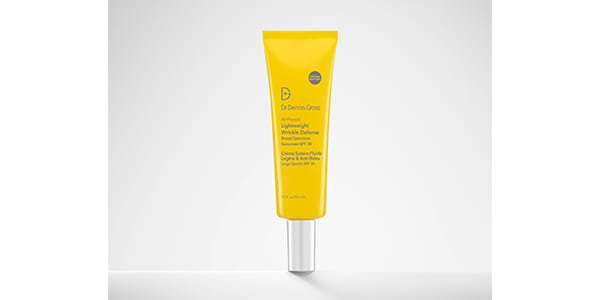
“The best protection [against blue light] is a physical sunscreen that is formulated with antioxidants,” Dr. Gross says. This oil-free formula features transparent zinc oxide, lingonberry, and sea buckthorn for holistic protection against the sun, blue light, and free radical damage. If you really want to supercharge the effects, Dr. Gross recommends using a vitamin C serum under the sunscreen “for good measure.” $42, sephora.com
For Correction: Ambari PM Active12 Serum
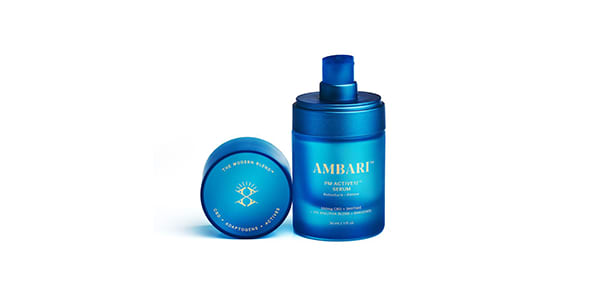
“This product is a three-in-one that resurfaces, revives, and clarifies skin,” Dr. Engelman says. It’s multipurpose benefits are thanks to a potent blend of actives. “The combination of AHAs, adaptogenic reishi, bakuchiol, and CBD is very effective at making skin appear more youthful without over-drying,” she adds $98, ambaribeauty.com
For Prevention: Goodhabit Bright Awake Eye Cream
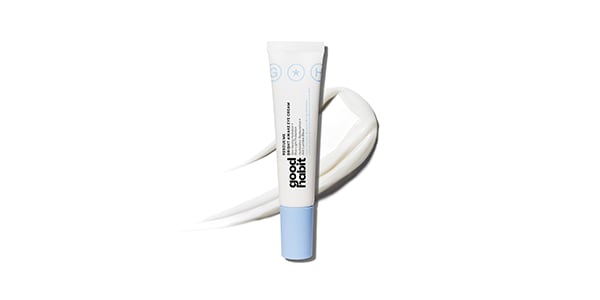
Minimize dark circles and puffiness while protecting the thin skin around the eyes from the strain of staring at screens all day with this hydrating eye cream. Cedar bark extract increases circulation, green coffee bean stimulates collagen, kukui nut oil moisturizes, and the brand's proprietary BLU5 technology fights the effects of blue light. $46, goodhabitskin.com
For Prevention & Correction: Chantecaille Blue Light Protection Hyaluronic Serum
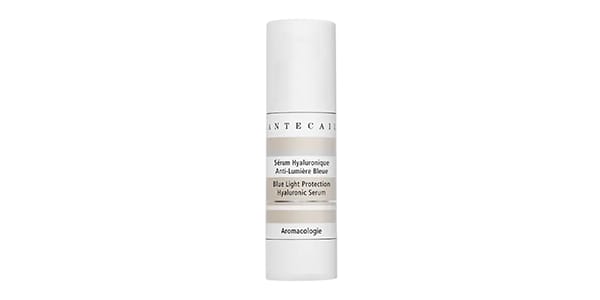
This hyaluronic acid (HA) serum is infused with a botanical blend that is suitable for all skin types and attacks blue light from all angles. Fermented, nasturtium flower, and red sage root extracts address visible signs of damage (think: dark spots, dullness, redness), while HA, amino acids, alga and tamarind extracts plump, smooth, and protect. $150, chantecaille.com
For Prevention: One Ocean Beauty Blue Light Protection + Hydration Mist
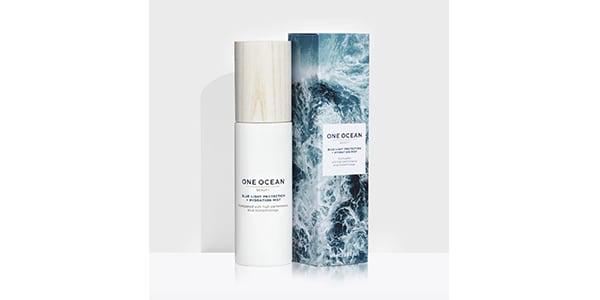
Free from parabens, sulfates, phthalates, and synthetic fragrance, this refreshing mist features algae from the Celtic Sea to hydrate and strengthen the skin’s natural barrier to shield against blue light. It’s also perfect for all-day touchups. $58, oneoceanbeauty.com
For Prevention & Correction: SkinCeuticals CE Ferulic
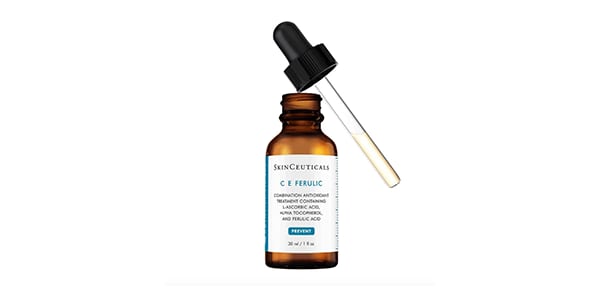
It’s a cult-favorite for a reason. Dr. Engelman says this offering from SkinCeuticals “is an amazing daytime serum that protects against environmental aggressors, like blue light damage.” It combines ferulic acid with vitamin C and vitamin E to fight free radicals, which “contributes to a more youthful appearance,” she notes. $166, dermstore.com
For Correction: Perfect Image Hydro Glo Peel Pads

At-home peel pads are a great way to improve skin tone and texture (i.e. the signs of aging most often associated with blue light damage). “These are made with mandelic acid to gently exfoliate and promote collagen production, and kojic acid to brighten dark spots and prevent wrinkles from forming,” Dr. Engelman says. $30 for 30 pads, perfectimage.com
For Prevention: Dr. Dennis Gross Skincare C+ Collagen Brighten & Firm Vitamin C Serum
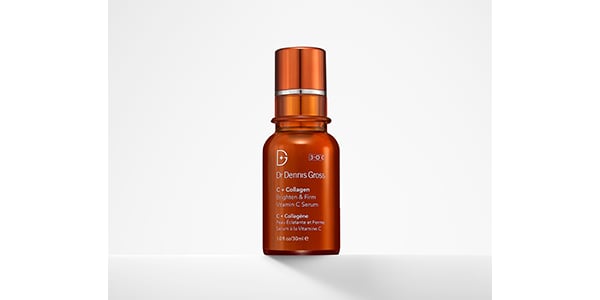
Remember that sunscreen/vitamin C layering trick Dr. Gross mentioned earlier? Well, this serum from his eponymous line will boost the efficacy of your SPF and collagen production thanks to a unique blend of CoQ10, niacinamide, and vitamin C. $78, sephora.com
All products featured are independently selected by our editors, however, AEDIT may receive a commission on items purchased through our links.
More Related Articles
Related Procedures

AI Plastic Surgeon™
powered by'Try on' aesthetic procedures and instantly visualize possible results with The AI Plastic Surgeon, our patented 3D aesthetic simulator.


